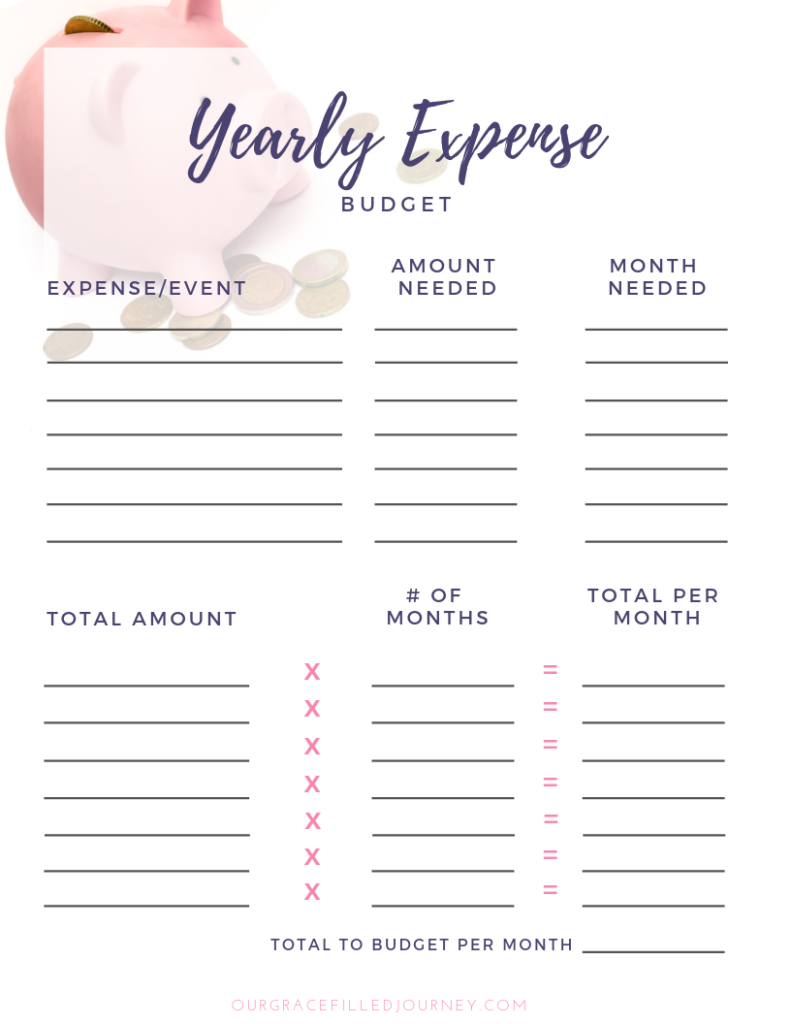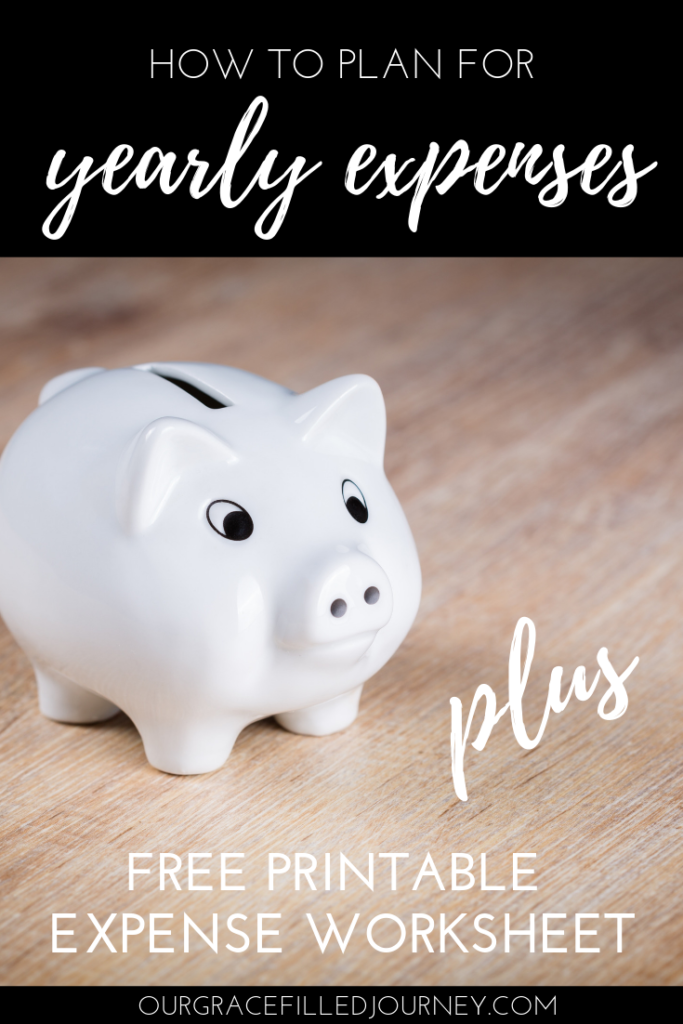Budgeting can be a four letter word for some, especially when you have irregular income or expenses. Yearly expenses can sneak up on you unless you have a plan in place to cover them.

Simply put yearly expenses are:
those expenses that only show up once a year, but must be paid at a certain time for a certain amount
Planning for yearly expenses really is very simple.
It only takes a little planning at the beginning of the year. The hard part is remembering all the expenses that pop up so that you are not caught off guard.
Look back at what you spent and when you spent it last year.
This is your most time consuming step, so just keep plugging ahead. Go back through your checkbook or online account and see what you paid when. Simply go through each month and write down any expense you paid during that month that only happens in that month every year. You may need to go back through credit card statements as well.
For us these are expenses such as our vehicle registration, membership fees (Amazon Prime, club memberships, annual credit card fees), yearly vet exam, etc.
Look at your calendar
What recurring special events happen during the year that you need to be prepared for? Christmas, anniversary, and vacations are probably the three biggest for most people.
Determine what you spend on each event and write that down along side the annual expenses you have already found.
Divide by your timeline
You need to take each one and divide it by the number of months you have to save up for the expense. Once you have a year under your belt, you will simply divide by 12. However, when you are just getting started, you may have to save up for some rather quickly.
For example, you may need to save $100 for an annual expense coming up in April. For that expense, you need to set aside $25 per month. Then beginning in May, simply divide that $100 by 12 and start setting aside $9 a month. You will have that $100 set aside for April without stressing out and wondering where it is going to come from.
Look at your monthly budget
Here is where you may have to make a few compromises and hard decisions. You can only spend or save the amount of money you actually bring in each month.
Add up the amounts you have just figured out and then look at your monthly budget. If you have enough left over to cover the total you just came up with, wonderful! If not, don’t fret. Just take a step back and re-evaluate.
- What are your non-negotiables?
- Can you lower some other monthly bills like grocery, cable, or eating out to cover what you need to save?
- Do you need to lower your budget for Christmas or one of the other yearly expenses?
- Do you need to cancel a membership fee or another annual expense?
We have three non-negotiables when it comes to our yearly expenses – vet, vehicle taxes, and certain membership fees. These amounts get saved each month and everything else we want to save for comes after them. It may mean a smaller Christmas or a closer vacation spot, but the priorities are set.
One thing to remember
Be patient with yourself and give yourself a little bit of grace. Taking steps to be better prepared with your finances takes a little bit of time. Do what you can now and work toward where you want to be.
To help you get started, I have created a printable for you to use while you work through this process.

Click here for your FREE download.
Pin for later

Leave a Reply
You must be logged in to post a comment.